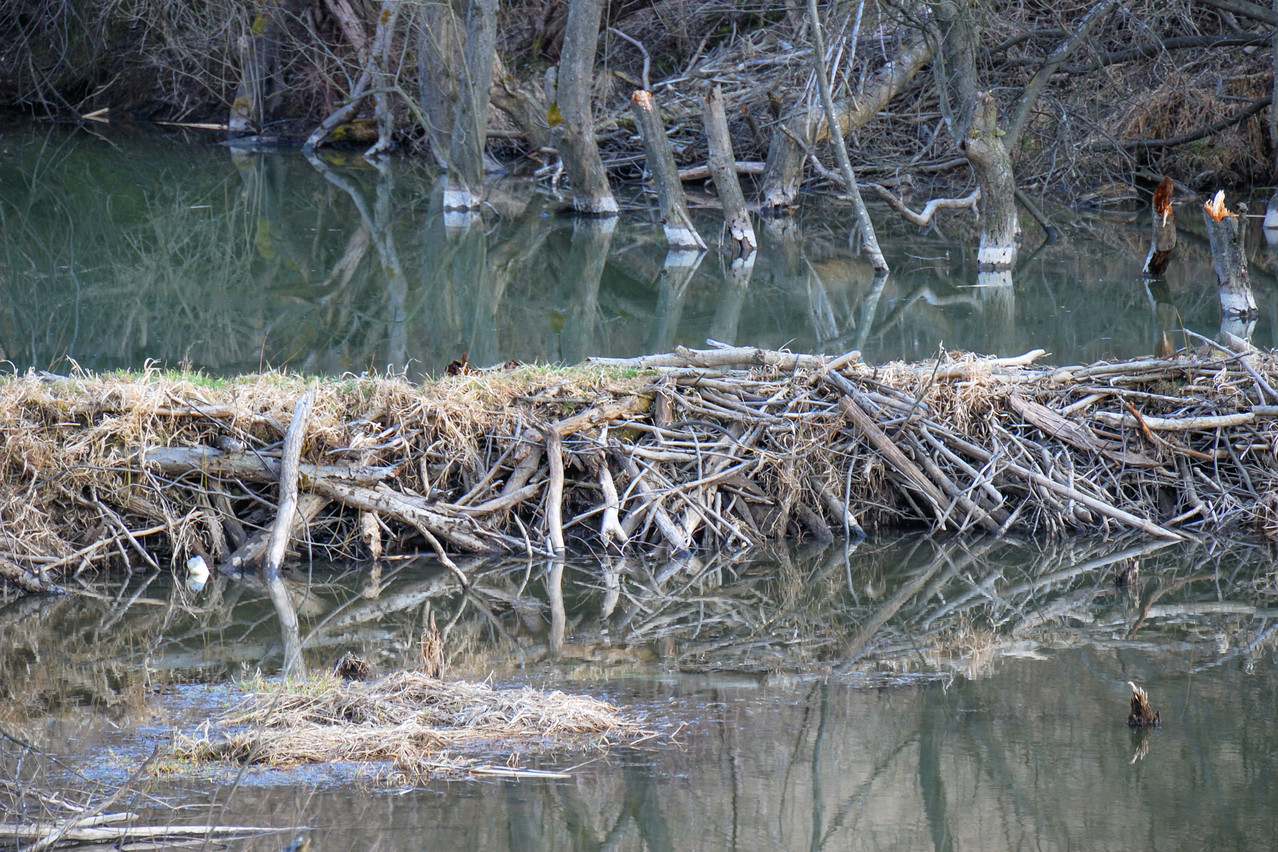I am standing face to face with a beaver in the basement of the nature and forestry administration, the ANF, in Diekirch. My fluffy friend is one of a dozen that have been stuffed and mounted for educational purposes. “They were all found dead,” Marianne Jacobs of the ANF reassures. After being hunted to extinction for their fur, flesh and geil, a curative glandular secretion two centuries ago, up until a few years ago the only way to see a beaver in Luxembourg would have been in stuffed or photographic form.
Thanks to efforts to reintroduce the European beaver into neighbouring countries and forbid hunting, their numbers have swelled to between 600-800 in Luxembourg, going from nine reported sites, or families, in 2009, to 80 today. That is good news, and not just if you’re a beaver.
“Beavers have the biggest impact of any species on biodiversity,” says Alexander Kristiansen, who manages a team in the field for the ANF. “We say a beaver is like a Dutch engineer, with their dams, a Norwegian lumberjack and a Portuguese worker. They know exactly how to scan the landscape and, with the smallest effort, build a dam to flood a few hectares.”

A beaver dam and swamp in Slovakia. Shutterstock
The dams, he explains, are their habitat: beavers feel safe in water and they need to build up the level so that the entrance to their lodge is submerged. From the dam they might also build a canal to a tree along which they can float back wood. “Once you build a dam, areas get flooded, trees die, birds nest in those trees and they become like insect hotels. You have different vegetation that is good for fish and that filters water,” Kristiansen explains. They are even beneficial at limiting the impact of natural floods—because the dams slow the flow of water further down the line. “Even half a metre can make a big difference,” says Jacobs.
The accolade “key species” makes sense and yet beavers remain massively misunderstood in Luxembourg, which is why the ANF does a lot of awareness raising work.
“Many people think that beavers are just found in Canada,” Kristiansen says. Unless you know what to look for, you’re unlikely to see one in the wild, even though they can grow up to 1.3 metres in length including their tail.
Kristiansen was recently contacted by a man who checked his parents’ home while they were on vacation and found that newly planted trees had been completely felled. “He didn’t know what it was because he didn’t know we had beavers here!”

What’s not to like about the “biber”? Jess Bauldry
“No-one fears the beaver”
For the most part, the beaver gets good pretty good PR thanks to their appearance. “No-one fears the beaver. To us they look cute, and it makes it easier to protect them,” says Jacobs.
Nevertheless, there are tensions. Around 15 years ago a beaver community in Larochette was poisoned. Uninformed people mistakenly act out of fear that beavers will chop down all of the trees, or deprive fishermen of fish--never mind that beavers are vegetarian.
The biggest real risk to people is tunnelling, which may cause sinkage on farmland or trees to fall on roads or rail tracks. In these instances, Kristiansen will seek a solutions through compensation incentives to not farm the tract of land beside a waterway for instance, or buying land. The best solutions involve landowners engaging in some way, like by planting a crop beavers can feed on. A farmer who followed this advice “took his family to see the beavers and now they love them. That’s the best strategy, when you take the children and their eyes are shining and then the father can’t say anything,” Kristiansen smiles.
One threat that is less easy to reason with is weather. The two expect that floods from 14-15 July will have killed any beavers that were less than a year old. A survival mechanism in the young means that they “float like a cork” when placed in water. But since lodges filled up with water, the young would have been trapped inside and most likely drowned. The full extent of losses won’t be known until the next time they monitor, in the autumn. The fear now is that torrential rain and flooding will recur more frequently, potentially destabilising this key species.
Where to see a beaver in Luxembourg
The last lake at Kockelscheuer is a well-established beaver site. Otherwise, download the and enter “castor” (French for beaver) in the search engine to find reported beaver sites. The best time to spot a beaver from afar is in the autumn when there is less vegetation and therefore sites are more accessible.
